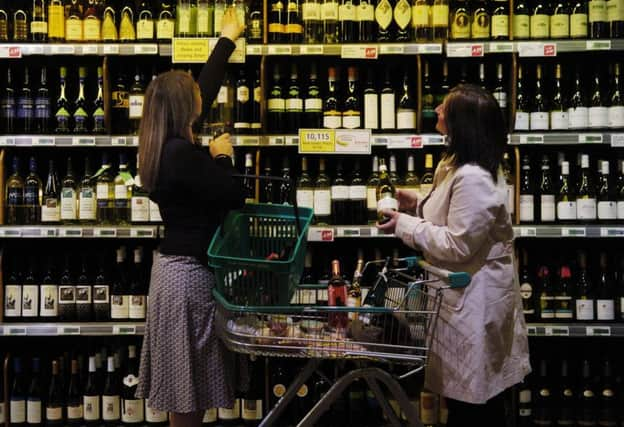More to a label than just a name of a chateau


Anyone concerned about eating and drinking healthily will pay close attention to product labels when doing their shopping.
Most packaged food and drink items we put in our supermarket baskets come with information on the product’s ingredients, potential allergens, nutritional value, serving size and recommended daily allowance. Most items, that is, except alcohol.
Advertisement
Hide AdAdvertisement
Hide AdAlcohol is currently exempt from EU legislation that makes it mandatory for food products and soft drinks to show detailed ingredients and nutritional values on their labels.
Labelling on alcohol products is voluntary, with individual alcohol producers and retailers left to decide on what and how much information to give consumers. In practice, this varies widely and is often limited to alcohol content and a meaningless “drink responsibly” slogan. Half of all wine labels still don’t carry unit information, the Chief Medical Officer’s consumption guidance for low-risk drinking, or a pregnancy warning.
Labelling with health and nutritional information is essential to helping consumers make informed decisions about what they choose to eat and drink for the sake of their general health and their waistlines.
Alcohol is linked to around 200 medical conditions, causing serious health damage and premature death.
Too often, when people think about the dangers associated with alcohol, it’s the disorder caused by weekend binge drinking that comes to mind, rather than the part alcohol plays in diseases such as heart disease and stroke.
Public surveys also show many people are unaware of the links between alcohol and cancer. Alcohol, like tobacco, is a class one carcinogen, and is a recognised risk factor for cancers of the breast, liver, bowel, mouth, throat, larynx (voice box) and oesophagus. After smoking, alcohol is the second-biggest risk factor for cancers of the mouth and throat.
As a society, we have long accepted that since tobacco is a carcinogen, cigarette packets should carry health warnings. Text warnings were introduced in the early 1990’s and now all packets also have to show graphic picture warnings.
Most health risks from drinking alcohol increase the more we drink, but there is no such thing as “safe” drinking.
Advertisement
Hide AdAdvertisement
Hide AdAll drinking carries risk. That’s why it is important for every alcohol product label to include official health guidance on low-risk drinking limits and the need to have at least two alcohol-free days every week.
Showing the calorie content and nutritional values on all drinks labels would also help people realise just how calorific, and often high in sugar, alcoholic drinks are. Alcohol has no nutritional value, but has nearly as many calories as fat. A large glass of wine contains around 200 calories, while a pint of cider contains five teaspoons of sugar. Over time, regular drinking can easily contribute to weight gain which brings with it more health risks including high blood pressure, diabetes and fatty liver disease.
Lifestyle factors like smoking, alcohol, being overweight or obese, and physical inactivity, are making a bigger contribution to ill health.
Immediate action is needed to standardise alcohol product labelling to better inform consumers of the risks of alcohol consumption. The current system of alcohol labelling is inadequate. Mandatory rules on product labelling should be extended to alcohol to ensure that every alcohol product includes a prominent, evidence-based health warning as well as describing the nutritional, calorific and alcohol content.
We know there’s public support for more nutritional and health information on alcohol product labels.
A recent UK-wide survey found 83 per cent of people support information on how alcohol can impact on health, and 87 per cent support a warning that when pregnant, the safest option is to avoid alcohol completely.
This isn’t about frightening people or putting them off drinking altogether. This is about us all having the right to know what we’re putting into our bodies and how we could be risking our health. Let’s not keep drinkers in the dark any longer.
• Barbara O’Donnell, acting chief executive, Alcohol Focus Scotland
SEE ALSO